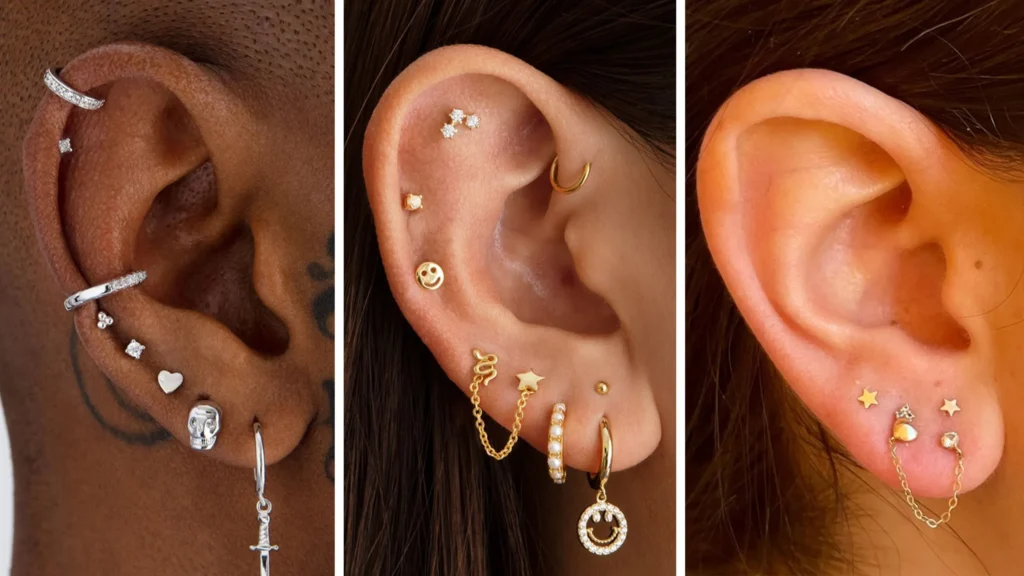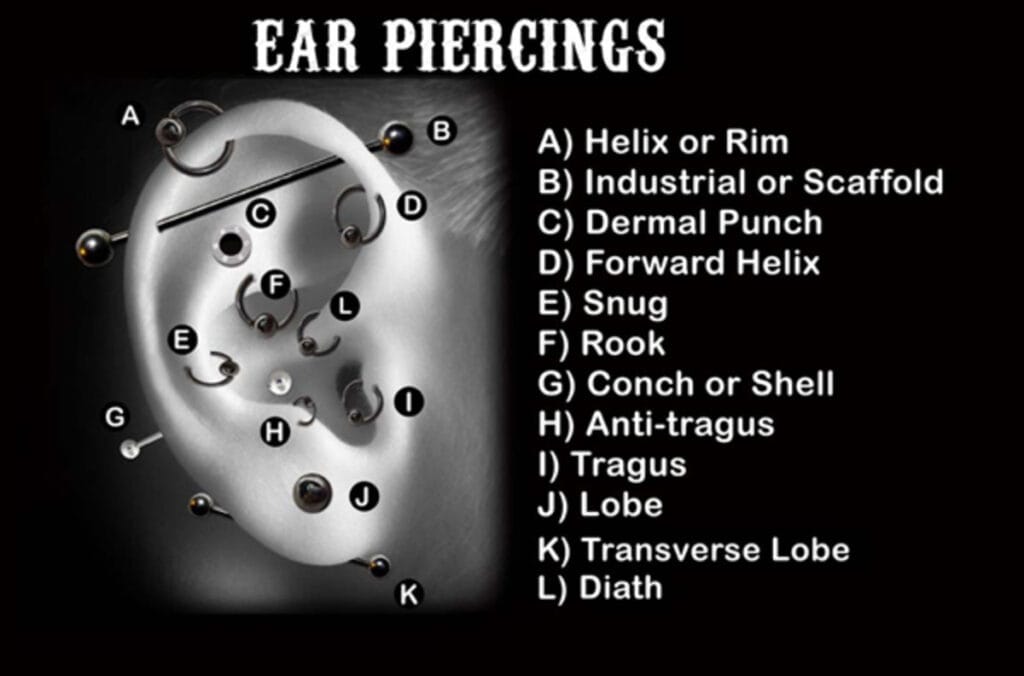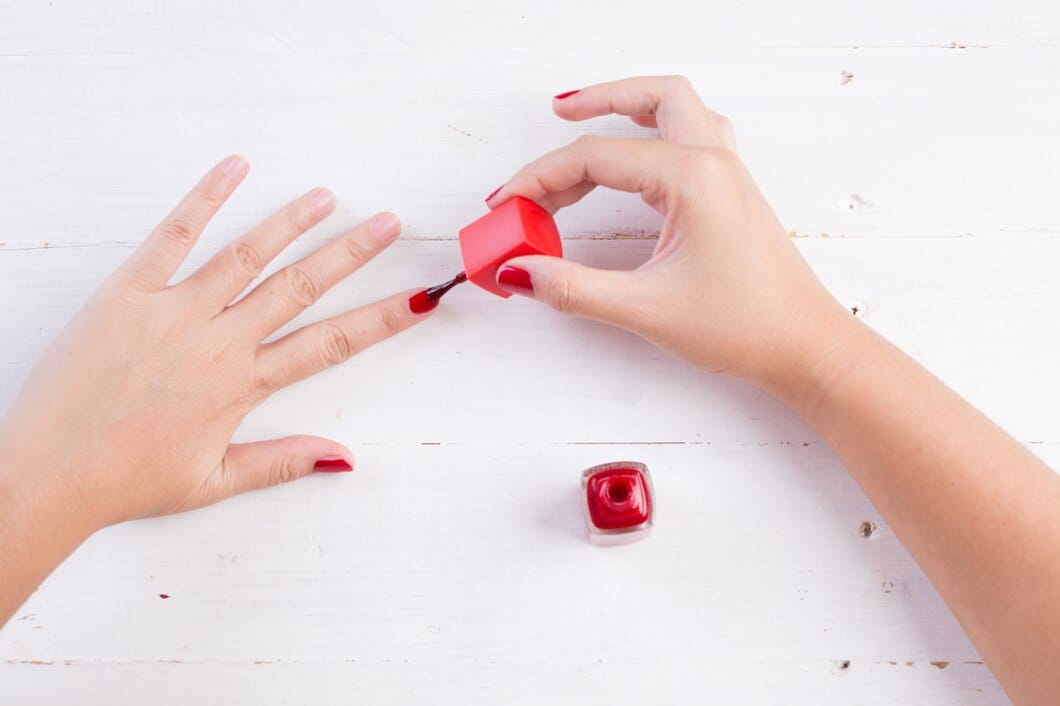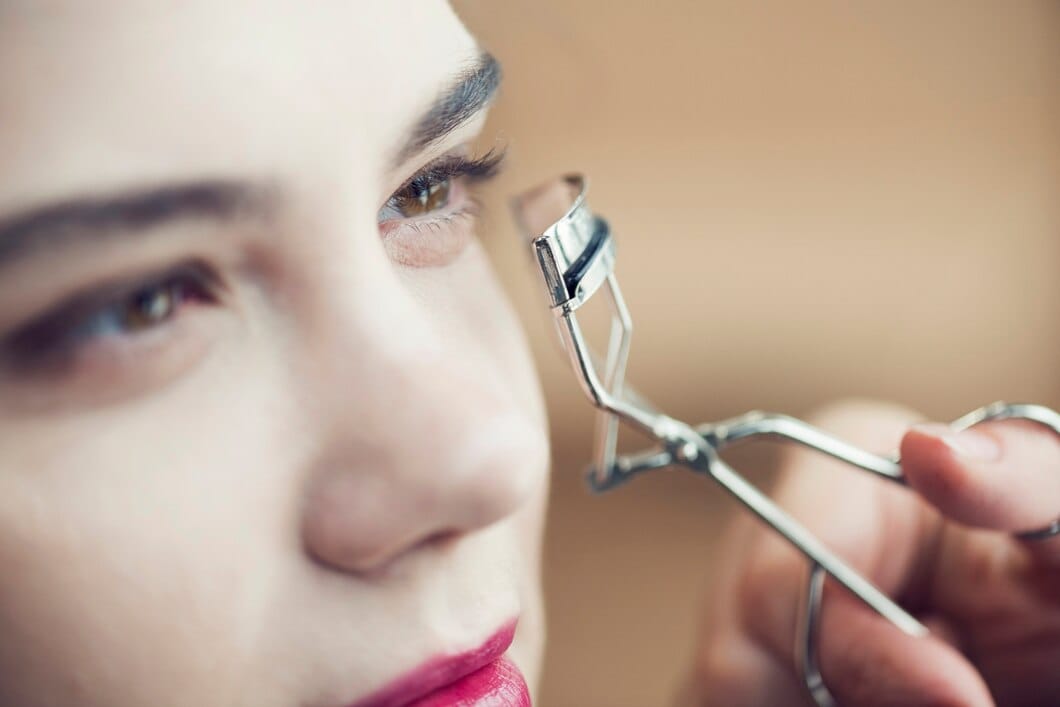Ear piercings are traditional ways of expressing oneself, and there are numerous ways of going about them, whether one likes it bold or daintily elegant, because ear piercings can accommodate every taste and preference. Before making that ear piercing, one has to know the types of piercings, the amount of pain they will face, and what is supposed to be done to heal from the piercing once exposed. Therefore, here is a pretty in-depth guide to the popular forms of ear piercings and their pain levels, along with a few care tips.
Types of Ear Piercings

Lobe Piercing
The lobe piercing is the most common and beginner-friendly option. It is placed on the fleshy lower part of the ear, and it is quick and relatively painless. Healing time usually takes between 6 to 8 weeks.
Upper Lobe Piercing
This is a subtle variation slightly higher than the standard lobe piercing. Pain levels are minimal, and healing takes around 6 to 8 weeks.
Helix Piercing
Helix Piercing: This is an ear piercing, located on the upper cartilage part of the ear. It can be very flexible. Pain: The cartilage causes moderate pain. Healing takes from 6 months to 12 months.
Forward Helix Piercing
Positioned on the cartilage adjacent to the forward curve of the ear, a forward helix piercing is pretty stylish and elegant. Pain Level: Moderate healing time: from 6 to 12 months.
Tragus Piercing
The tragus is the small flap of cartilage close to the ear canal. With moderate pain and a healing time of 3 to 9 months, this piercing stands out with its edgy look.
Anti-Tragus Piercing
Opposite the tragus, the anti-tragus piercing is a different touch. It is moderately painful and takes 6 to 12 months to heal.
Conch Piercing
Conch piercings can be done as a stud or hoop in the inner cartilage of the ear. Pain is moderate, and healing time takes 6 to 12 months.
Daith Piercing
The daith piercing is found in the innermost fold of the cartilage and is believed to help people with migraines. Pain is moderate to high, and healing time is 6 to 12 months.
Rook Piercing
The piercing of the rook is at the cartilage fold above the daith and is moderately painful with a healing period of 6 to 12 months.
Industrial Piercing
An industrial piercing connects two holes with a single barbell, usually across the upper ear. Pain levels are high due to dual piercings, and healing takes 6 to 12 months.
Snug Piercing
The snug piercing is located in the inner cartilage ridge of the ear. This area is quite challenging to pierce, often resulting in significant pain and requiring a healing period of 6 to 12 months.
Pain Chart for Ear Piercings

Everyone has different pain thresholds, but in general, lobe piercings are not as painful as those done in the cartilage. Here is a general pain scale (1 being least painful, 10 being most painful):
- Lobe Piercing: 2/10
- Upper Lobe Piercing: 3/10
- Helix Piercing: 5/10
- Forward Helix Piercing: 6/10
- Tragus Piercing: 6/10
- Anti-Tragus Piercing: 7/10
- Conch Piercing: 6/10
- Daith Piercing: 7/10
- Rook Piercing: 7/10
- Industrial Piercing: 8/10
- Snug Piercing: 8/10
Aftercare Tips for Ear Piercings
Clean the piercing twice daily using a saline solution or a specialized aftercare product.
- Refrain from playing with or twisting the jewelry.
- Steer clear of swimming in pools or lakes until your piercing has fully healed.
- Try to sleep on the side opposite your new piercing to minimize irritation.
- Keep an eye out for any signs of infection, such as redness, swelling, or discharge.
Choosing the Right Piercing for You

Consider factors like your ear anatomy, lifestyle, and pain tolerance when selecting a piercing. Consult with a professional piercer to determine what styles will suit your ears best.
Conclusion
Piercings are all about the trendy and flexible form of expression around the ears and enjoyment with good knowledge about types of piercing, pain associated with it, and aftercare tips.







